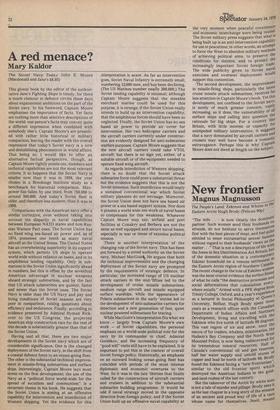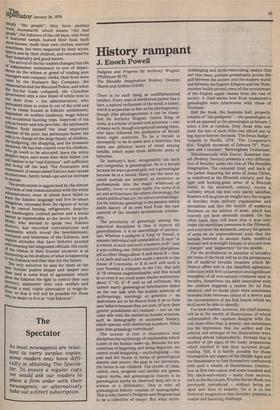New frontier
Magnus Magnusson
The People's Land: Eskimos and Whites in the, Eastern Arctic Hugh Brody (Pelican 90p) "The wife . . . is now clearly the dominant partner. Such women send their husbands on errands, do not hesitate to serve themselves first with the best pieces of meat, and feel quite entitled to enter extramarital sexual liaisons without regard to their husbands' views on the matter ..." That is not a description of life with the Jones in Sex Discrimination Act Britain, but of the domestic situation in a contempurarY
Eskimo household on a remote settlem i
ent n the Eastern Arctic region of Northern Canada. The recent change in the role of Eskimo women A was the most crucial evidence the author fotim: of what he calls "the destructive processes and social deformations that colonialism everYwhere entails." Armed with a PPE degree from Trinity College, Oxford, and a year's experience as a lecturer in Social Philosophy at Queen s yearsUniversity, as a r eBelfast,sear c h officerH u g h Brodywith the Canadian anadian Department of Indian Affairs and Northern Development, living and travelling with the Eskimos who live north of latitude 60 degrees, This vast region of ice and snow, once the mecca of fur traders, whalers, missionaries, the Hudson's Bay Company and the North West e three Mounted Police, is now being rediscovered for. its tremendous mineral resources. Half 01 Canada's conventional oil and gas reserves. half her water supply and untold stores Of copper and lead lie north of latitude 60. Brody, found the Eskimos facing a "new frontierism similar to the old frontier spirit which destroyed the American Indians in the goldand-land-rushes of the last century.
But the takeover of the Arctic by white men is not a tale of murder and pillage. Brody sees it as the last chapter in a long story of the erosion of an ancient and proud way of life of a race whose name for themselves, Inuit, means
simply "the people"; they have another word, Inumrnariit, which means "the real People", the Eskimos of the old days, who lived to scattered camps, hunted their food, built snow-houses, made their own clothes, starved sometimes, but were respected by their wives, held in awe by their children, and renowned for their hospitality and good nature. The arrival of the fur traders changed this life independent ndependent subsistence to one of dependence on the whims or greed of trading post Managers and company clerks; their lives were nded by the Hudson's Bay Company, the Missionaries and the Mounted Police, and when the fox-fur trade collapsed, the Canadian government sent a new breed of white men to run their lives — the administrators, who Persuaded them to come in out of the cold and live in cheap houses in Eskimo settlements, dePendent on welfare handouts, wage labour and occasional hunting trips. Deprived of his role as hunter and sole provider, the settlement Eskimo finds himself the least important Member of his poor, but permanent home; his Wife is in charge of the large family of children, the budgeting, the shopping, and the domestic diecsions. He has lost control over his children, Who go south to be educated, learn the white People's ways, earn more than their father, yet still hanker to be "real Eskimos", self-sufficient and living off the land. The frustration and r:,esentment of emasculated Eskimo men causes runkenness, family break-ups and an increase
tri suicide.
The predicament is aggravated by the almost to lack of real communication with the white ,athninistrators, most of whom have failed to ":arti the Eskimo language and live in.smart ungalows, cocooned from the rigours of Arctic life by central heating, refrigerators, deep-fro fl hamburgers, cocktail parties and a social iu3arner as inpenetrable as the Arctic ice pack. j.ncly, who learned to speak two Eskimo dialects, has recorded conversations and statements which reveal the bewilderment, Confusion and bitterness of the Eskimos, and ,..exPlain attitudes that have hitherto puzzled well-meaning but misguided officials. His study .of the whites in their frontier situation is as lascinating as his analysis of what is happening
the Eskimos and their fear for the future.
The only salvation he sees for them as the their frontier pushes deeper and deeper into ‘aeir land is some kind of agreement which ttves the 'Eskimos the right to control their own -rntorY, administer their own welfare and Provide a real, viable alternative to wage-launur, so that it will still be possible for those Who so desire to live as "real Eskimos".



































 Previous page
Previous page